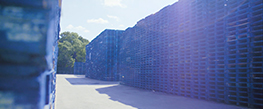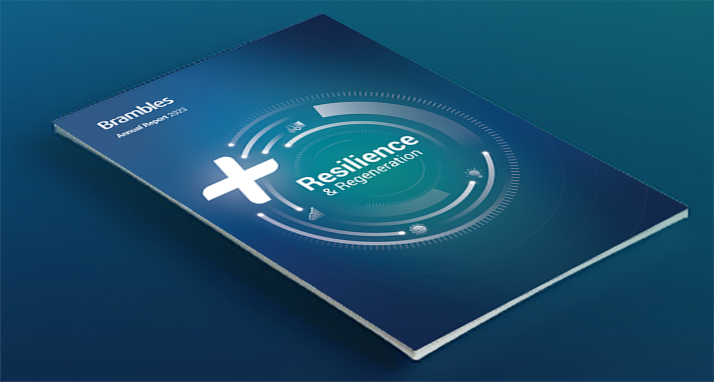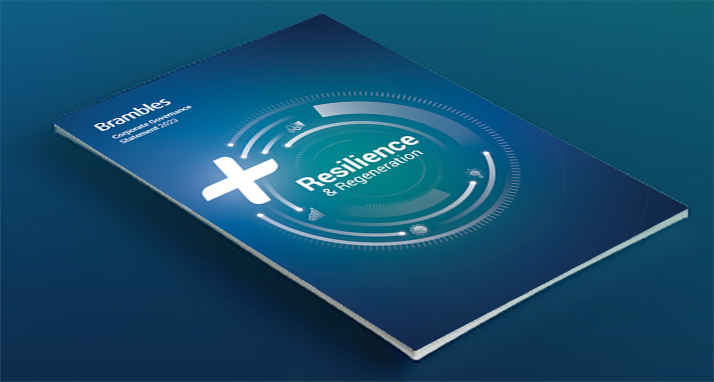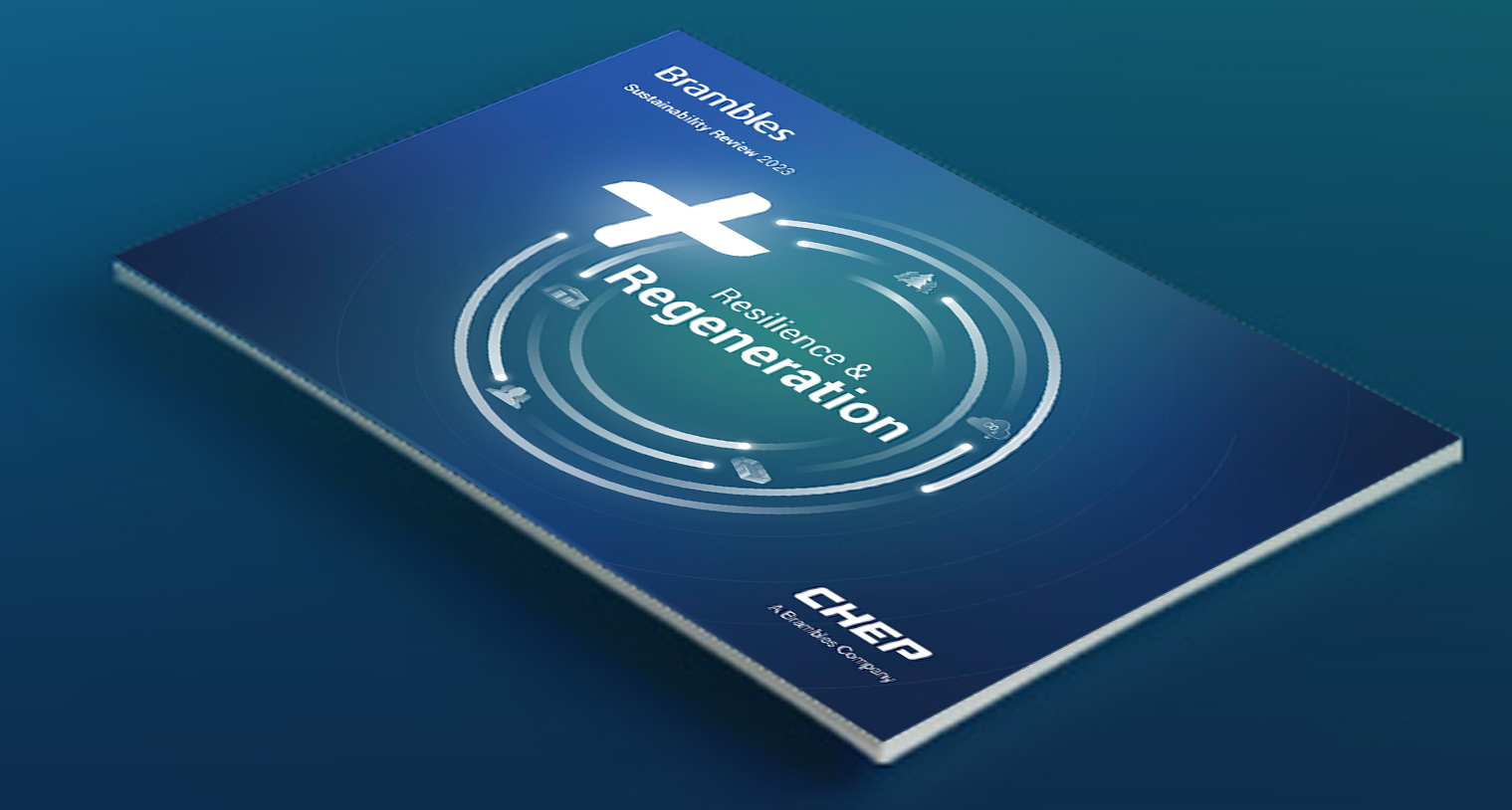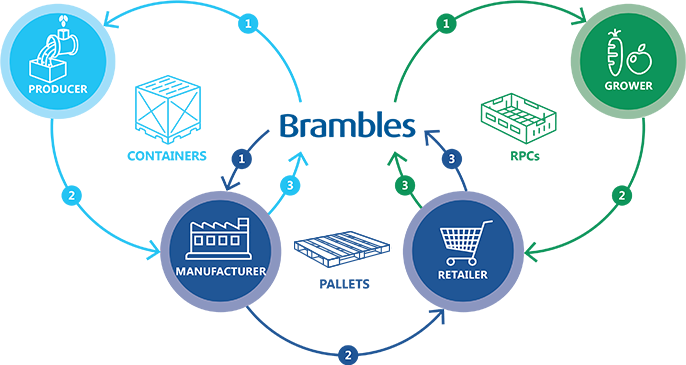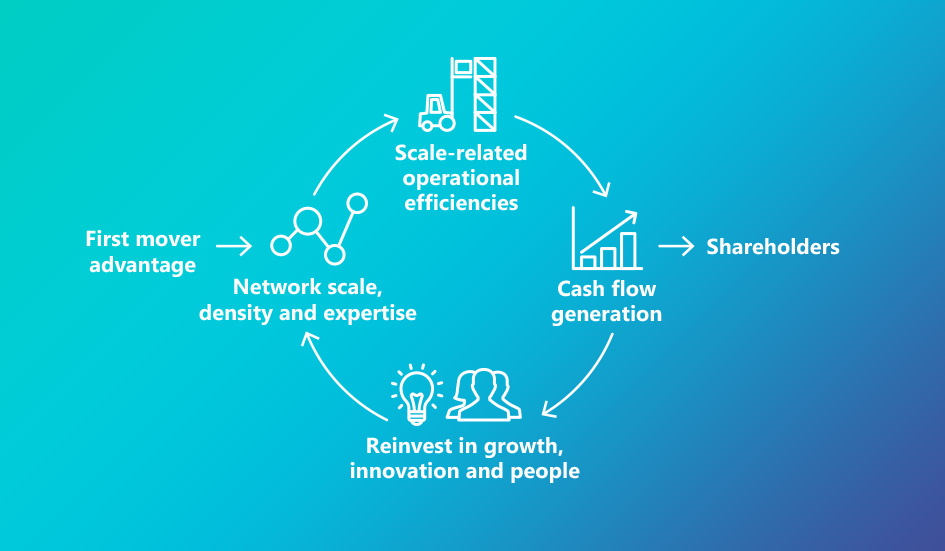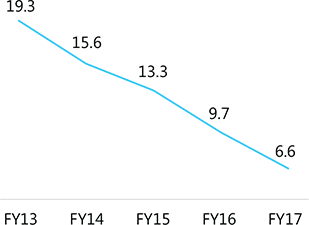Brambles generates value through
a virtuous circle that leverages its
network advantage of scale, density
and expertise to achieve superior
operational efficiencies.
These efficiencies in turn generate
cash flow that can either be returned
to shareholders or reinvested in the
business to fund growth, innovation
and development of its people.
Long-term Value Creation and Superior Shareholder Returns
Brambles shares the efficiencies generated by its scale, density and expertise with its customers, providing a compelling value
proposition compared to alternatives. By providing customers with supply chain solutions in over 60 countries, Brambles offers
shareholders exposure to geographically diversified earning streams primarily from the global consumer staples sectors.
The supply chains served by Brambles also provide a broad range of growth opportunities including: increasing penetration of
core equipment-pooling products and services in existing markets; diversifying the range of products and services; entering new
and adjacent parts of existing supply chains; and exploring the digitisation of supply chains.
Within this context, Brambles is committed to striking the right balance between growing its business and delivering superior
shareholder returns over the long term. By focusing on its core drivers of value, Brambles expects to deliver through the cycle:
Sustainable growth and returns well in excess of the
cost of capital
- Sales revenue growth2 in the mid-single digits;
-
Underlying Profit growth2 in excess of sales revenue
growth; and
- Return on Capital Invested in the mid-teens.
Cash generation to fund growth, innovation
and shareholder returns
-
Free Cash Flow sufficient to fully fund capital expenditure
and dividends
Dividend Policy and Payment
Brambles has a progressive dividend policy. Under this
policy, the Group seeks to maintain or increase dividend per
share each year, in Australian cents, subject to its financial
performance and cash requirements.
The Board has declared a final dividend for 2017 of 14.5
Australian cents per share, in line with the previous interim
and final dividend. The 2017 final dividend will be 30%
franked and is payable on 12 October 2017 to shareholders
on the Brambles register at 5.00pm on 14 September 2017.
The ex‑dividend date is 13 September 2017.
Total dividends for the Year were 29.0 Australian cents per
share, in line with the prior year. Brambles paid the 2017
interim dividend of 14.5 Australian cents per share on
13 April 2017.
Dividend Reinvestment Plan
Brambles’ Board maintained the Dividend Reinvestment Plan
(DRP) for the 2017 financial year. Shares issued under the DRP
do not attract a discount. Any dilutive impact on earnings per
share of DRP-issued shares will be neutralised through the
transfer of existing shares to participating shareholders via
on‑market purchases rather than issuing new shares to them.
ESG Recognition
Third-party Environmental, Social and Governance (ESG) investor research consistently recognises Brambles’ strong
governance processes and the long-term sustainability of its business model and strategies. In 2017, Brambles was
placed amongst the leading companies in the global industrial services sector by the following ESG research firms:
